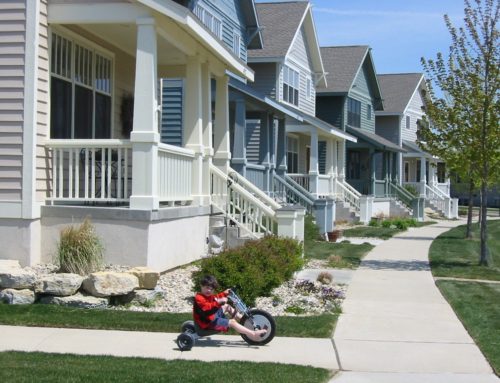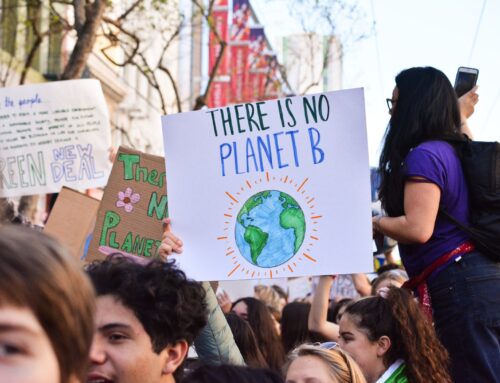This is a multi-part series, see Part 1 for a snippet of background and Part 2 for a discussion of regional issues.
I ended Part 2 stating that the path of the last century has preferred big – big business, big projects, big ideas – and has eroded diverse, distributed, and dynamic systems. This trend is evident in technology, where fewer and fewer players are controlling a larger part of the market. While those players used to appear benevolent, grave privacy and security concerns have surfaced with most users trapped due to our reliance on their growing centralized ecosystems. Similar trends should be in recent memory, big banks in particular, whose size and growing services blurred previous lines between investments and securities and threatened the financial system. These are examples of concentration and bigness, which breed fragility.
“The Economy of Cities” by Jane Jacobs is required reading to make many of the connections I focus on here. (see also Cities and the Economic Development of Nations: An Essay on Jane Jacobs’ Contribution to Economic Theory) While not an economist, Jacobs presents a series of case study cities whose economies have collapsed following significant concentration into single industries. Silicon Valley is on its way to future collapse following this paradigm. Concentration on a limited industry disadvantaging the other industries that make a city function creates a fragile system. At present, Silicon Valley relies on a concentrated talent pool of programmers. This skillset, however, has been the target of every city and region essentially across the planet, aiming to create a local industry. Over time the tech sector has become more reliant upon distributed datacenters and distributed computing, so there is little reason to remain concentrated aside from a concentrated talent pool for the industry giants. Given the housing conditions in the Bay Area, this is a perfect setup for failure.
As industries have avoided distribution and diversification, so have our cities. Presently those places most impacted by housing affordability shortages are cities with powerful economies. The economic development mindset has broadly assumed that cities cannot grow their own powerful economies, rather they must engage in incentive wars to attract big industrial players. Few stop to think about where those big players got their start: locally, solving local problems and branching out from there. Rather than feeling impoverished for not owning the top industry of today, cities should concentrate on creating supportive environments within which their residents can innovate. We’ve always made cities this way, until we forgot how to make cities.
The US is littered with small towns and cities, currently ignored by our vision of a productive economy. Many of these places were established on the basis of distribution using the systems most efficient at the time, typically water or rail. Others were based upon agricultural production and distribution or material extraction and refining. As technologies changed, these places which were limited in their economic diversity have languished. Yet revolution is afoot in many such places, typically mid-sized cities which have begin to revive locally grown economies. Rather than centralize our population into a dozen mega-cities, we should consider the opposite – our ability to diversify and distribute.
Big cities have limits. While they are often an efficient means of leveraging economic growth, their attractiveness leads to problems with affordability, power demands, distribution of food, and handling of waste products. But I don’t suggest that we do away with big cities, rather that we aim to have more, somewhat smaller big cities. By proactively diversifying and distributing our economy, and practicing Jacobs’ import replacement theory, we can increase our strength and resiliency. In our climate-driven future, there are few places safe from potential disaster. In fact many of our powerhouse cities are located along the coasts. With the unpredictability of our future climate, it would be a mistake to go all-in on any region.
While we could start from scratch building new places, reviving many of those places that have fallen behind in recent decades is a more responsible mission. In fact this is happening independently, albeit slowly. Akron, Ohio’s refugee resettlement program has created a new, thriving local economy, reversing the city’s decades of decline (https://research.newamericaneconomy.org/report/welcome-to-akron/). Similarly, we can establish thriving, local economies by helping people who have to move due to housing costs, climate change, and a host of other issues. Doing so increases our overall wealth, productivity, and resiliency. It also allows us to correct a host of public health problems due to both physical living conditions and depression associated with a lack of self-worth.
Climate strife provides an opportunity to re-establish a dynamic and distributed economy, and those physical manifestations of economy in the form of settlement patterns. However, we shouldn’t wait for the increasing impact of climate change to initiate change. Structural economic and physical change is possible, change has happened, and change can lead us to a better, more resilient and fulfilling future.






![Planning for Adaptation [Podcast]](https://www.dpz.com/wp-content/uploads/2020/09/FutureoftheAmericanCity_american-500x383.jpg)